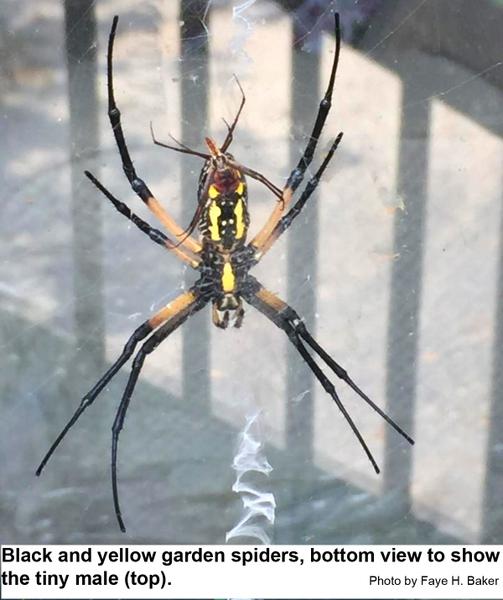See the Addendum 09/21/2025 below.
I have the classic iNaturalist app which I don't use often, so I use poorly. So far, the only information I have is Genus Argiope, which is probably correct. But I know this is not a Yellow Garden spider as is shown in the previous post. It is similar, but definitely a different spider. Check out the red medallion patch on the rear of its abdomen.
There were two. The first smaller than the one above.
The large size of this spider makes it a female; she knocked the smaller spider (a smaller female) away from the central part of the web
When the smaller spider tried to re-enter the web, she chased it out again. The smaller spider was the only spider I saw at first. It probably built the web.
Appreciate any feedback in the comments section from anyone who might know the common name of this spider.
From NC State University Extension: Male black and yellow
garden spiders are remarkably smaller than females.

I copied the photo above from NC State Extension that describes the male black and yellow garden spider as tiny. At first I didn't look at the photo closely; now I see, that is indeed a tiny male spider perched just over the round medallion on the female's rear abdomen. The spider in the NC State extension photo appears the same as the Belle Isle spider I found. This is the only matching photo I have found so far.
While the spider I photographed at Belle Isle is certainly different in appearance than the one I photographed at Devine Preserve, apparently they are all lumped into the genus Argiope and are called black and yellow garden spiders. Of note, my Belle Isle spiders' web did not have the corkscrew appearing stabilimentum (shown in the NC State photo). Maybe its web was still being constructed.
Addendum 09/21/2025
I have a friend who is really smart about these kinds of things and she recently responded to my email asking for her thoughts on this spider's common name for identification. She has her own meadow where these spiders are showing up. She notes that they are very successful hunters. My friend proposes that this spider's common name is Banded Garden Spider (Argiope trifasciata), a native of North and South America, but beginning to spread around the world. They have also been seen on the Canary Islands, the Azores, Egypt and other places.
If you see Banded Garden Spider photos on-line, you will likely be looking at the ventral side (underside) bands and from where the spider gets its name. It never occurred to me that a spider would not be named for the appearance of its dorsal side (topside). Again, not harmful to humans; it goes after garden pests. Leave it alone and get rid of your pests.









